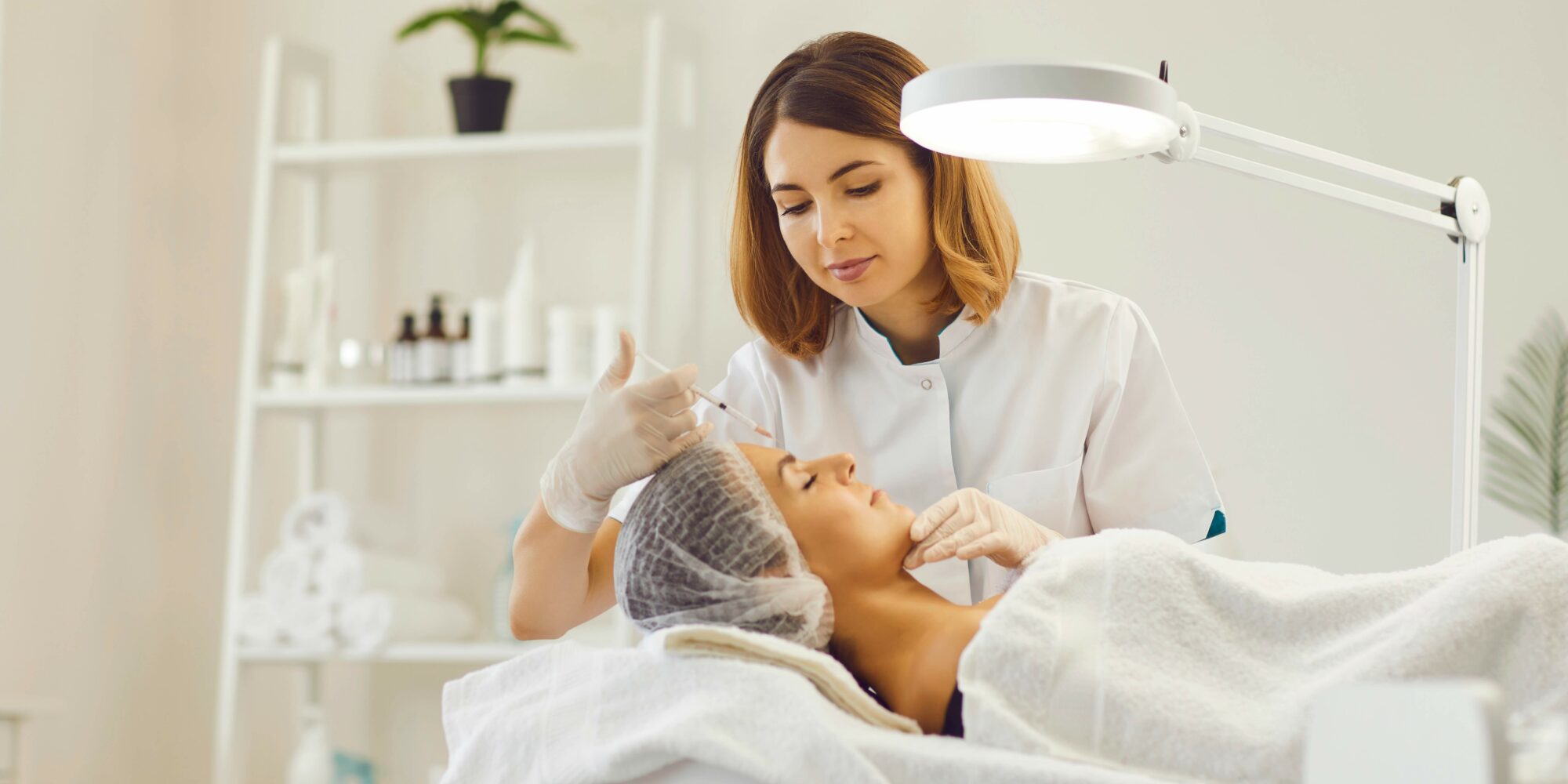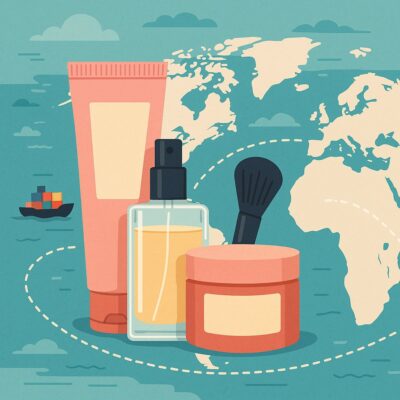
Med-Spas Have A Profitability Problem. Here’s How They Can Address It.
The United States med-spa industry is growing by more than $1 billion a year, but Bryan Durocher, founder of med-spa consulting firm Durocher Enterprises, believes it has a big program hidden behind the growth: unprofitability.
“Hardly anybody makes any money because they don’t know what they’re doing,” he says. “It’s about product, publicity and distribution. You have to run a med-spa like a retail business. If you try to run it like a doctor’s office, you’ll fail.”
Beauty Independent spoke with Durocher about what it takes for med-spas to move into the black, wellness services’ expanding role at them, strategies for generating awareness and private equity involvement.
What’s your specialty?
My specialization is really in medical and wellness. I’ve had my consulting company for 25 years and evolved from spa into medical health and wellness. We had lasers back in New York in 1997 before the word med-spa even existed. So, I definitely grew with this industry. I started my career in New York in 1990 with Georgette Klinger, which was my first foray into the spa world.
What I learned in the beginning of my career is still essential today because I worked for smart, successful people. With Georgette Klinger, for example, you would walk into this beautiful spa on Madison Avenue. The first floor was a retail store. The second floor is where they had client consultations and closing specialists that would close product and package sales or services.
You’d have to go to the third or fourth floors to get into the treatment rooms because she knew that product was the most profitable thing you had. She also knew you needed well-trained staff who weren’t just a bunch of healers and artists. but were salespeople able to close sales.
That’s a challenge when you’re coming into spa from medicine, no matter what your licensure is. The medical spa realm has quadrupled in the last 10 years. There was 2,500 standalone med-spas 10 years ago. Now, there’s 10,000 of them.
They all have to learn to sell. The drivers for this business are retail sales and pre-booking your patients before they leave. That way you guarantee your income in the future. You have to sell as many items as possible in memberships and packages because it creates cash flow and locks in your patient roster. Then, it’s about retention, which is critical.
I learned all of these things a long time ago and now I implement them with my clients. In this past year, I’ve opened up 10 or 11 standalone med-spas around the country for entrepreneurs that want to get into this realm. I help them from everything from creating business plans, to design and equipment, inventory, staff training and connecting them with the right vendors.

What does it take to be profitable in the med-spa industry?
It’s having a strong systems structure and the right mix of services. You need what I refer to as a third, a third and a third mix in your services: a third of your business should come from neuromodulators and fillers, another third from energy-based devices like lasers, and another third from health and wellness services. The latter is actually the most profitable aspect of the med-spa business since the consumable cost on them is much lower than on neuromodulators and fillers, for example.
Anybody who’s coming in for filler has to be converted to something else because the product cost there is anywhere from 38 to 50 cents on the dollar. You can never build a successful med-spa business on that. If you were a nurse practitioner in a studio suite all by yourself, you can probably still make some money. A patient who gets more than one service in the med-spa is 20% more likely to stay with that med-spa than the patient who only gets one thing done.
There’s a misconception about med-spas, too. I just did a presentation for Lumenis Lasers in Orlando, and I asked the audience, “There’s 334 million people in the United States right now. How many of them do you think have had Botox or a filler?” These are industry professionals who own med-spas. They’re like, “Probably about 30% of the population.” Only 1% of the population in the U.S. has had any type of a neuromodulator. So, I said, “Nobody has any clue about 99% of anything you do in a med-spa.”
Education is fundamental in this business in order to make people aware of what their choices are. I’m big on having clients implement layers of education to get people looking at the website and to call in and make a consultation for a service. There’s a lot that has to be done to be successful. You can’t just open up and think it’s going to be magic.
What are the health and wellness services specifically?
Every med-spa I’m opening up has that mix of services because they see the patient wants a holistic approach to wellness from the inside out. It’s not just about aesthetics. I’ll give you an example. I’ve been getting bio-identical hormone pellets for seven years. It changes your life. I went from being up for two to three hours every night with brain fog to sleeping beautifully through the night. I was able to put on more muscle mass and have tons more energy.
Then, there’s PRF where they do the O-shots and the P-shots. Those literally regenerate your sexual health and wellness. They regenerate tissue causing stimulation of collagen production, and they also create new blood flow and pathways.
For women, sex can become painful as they age. The O-shot turns back the clock. It also helps with urinary incontinence. There’s also vaginal rejuvenation, which causes the tissue to act like it’s younger, firmer and tighter. Again, it helps urinary incontinence and improves your sex life, if you’ve had challenges.
There’s also acoustic waves. Think of it like ultrasound. It has several functions. If men are suffering from erectile dysfunction, they use these acoustic wave machines to treat the penis to bring back functionality and blood flow to the gland. I have a client in Florida who’s big into functional medicine. She had a patient who was sexually dysfunctional for a decade, and after six treatments with acoustic waves, was able to function. People will pay the money for it.
That aspect of the business is growing like crazy, and there’s clinics that are opening up just with these services now. You’re going to see more and more of it. You just need a provider that’s quite passionate about it, and that can talk about it easily and educate the patient. Then, of course, there’s IV therapy and Ozempic. That’s become a big cash cow for the med-spa industry.
What are the biggest challenges med-spas face?
Definitely the profitability and lack of any fundamental understanding of numbers. Most of the operators are not business people. This business is unique and specific. Cost of goods is high, and the benchmarks and consumables are different from other businesses. My most successful clients are business people who come into this realm and they learn.
When I set up a client’s P&L, I break everything down. There are three things that will throw a med-spa out of profitability. No. 1 is payroll. They’re spending too much and paying people the wrong way. No. 2 is inventory management. They aren’t managing their consumables and/or the retail products. No. 3 is spending too much on marketing and advertising in the wrong places that are not producing a result. All the vendors always want to talk about top-line profits and not what you actually take home.
Labor is another challenge, particularly with lack of infrastructure. Labor training is essential for everything. I’m training all the employees on the protocols, and I teach them what to say, when to say it, how to overcome objections and how to read the room with your patient. Then, I tie my compensation to productivity goals. The higher their productivity goals are, the more they make per hour, so they’re incentivized every pay period.
Structure is what creates consistency, and consistency is what creates a good business. I’ve had people get audited in the past for trying to do the independent contractor thing, and they get busted for evading payroll taxes. The IRS has its eye on this industry.

How is private equity involvement affecting the med-spa industry?
They’re looking to piecemeal these clinics together, put in their operating business structures and get a certain multiple of them at a certain number producing a certain amount of dollars so that they can turn around and try to resell it.
How many times is that going to happen? It’ll be interesting to see. The reality is most med-spas in the U.S. are one-offs or two-offs. They’re realizing it’s harder than they thought in managing them.
Outside of sexual health and wellness, med-spa services are all a want. It’s not like the dentist or the doctor. You have to bring in that training and specifically that sales training. You try to run a med-spa like IBM, you’re going to have a lot of temperamental people who will quit working for you. This is a very people-focused industry. You also can’t be running them through corporate speak. Nobody’s going to relate to that.
Do you believe investor interest will go down?
No, I think that they’re very attracted to it, but finding it tough because the operators aren’t business people. It’s also hard to find ones that have the profit margin they’re looking for.
How can med-spas draw new customers?
Having a YouTube channel and other social channels are important, creating videos and Reels anywhere from a minute to five minutes in length talking about the services and the benefits and incorporating testimonials from existing patients. People like to do business with people they know and trust, and people buy into solutions to challenges and into good feelings.
So, I’m educating in a way I would talk to a friend instead of me trying to sell Morpheus8 treatments for $2,400. They don’t know what Morpheus8 is. You might want to talk about what radio frequency is and what it means to your skin. You might want to talk about microneedling and what that does.
Instead of spending a bunch of money on advertising, I really have my clients spend a lot in creating content. We embed it on their website and their social feeds. I find that really makes a difference in getting people to come in for a consult and making them aware of what’s out there.
What I’m trying to create is an omnichannel consumer, meaning I want my patient to sign up for my newsletter. I want them to follow my social media channels. I want them to come to my special events that I have once a month at my med-spa. I know that a patient who does all of these different things is going to spend anywhere from 18% to 36% more with me than the person who just comes in for a single service.
Where do you see the industry moving forward in the future?
You’re going to see the evolution of holistic, wellness-from-the-inside-out approach where they’re not just doing injectables, they’re doing everything. Neuromodulators may be on the rise in other geographic parts of the world, but here they’re actually reducing, believe it or not. Energy devices are on the uptick along with health and wellness services because med-spa operators are waking up and realizing they want to make money and that’s how they’re going to do it.
The technology advancements are going to continue. Plastic surgery drops as people are able to get results with more non-invasive procedures. That being said, there’s nothing that replaces a good facelift.
There’s a greater expansion of education in our industry that’s happening. People are investing in it, and they want to understand it more. I’ve spoke at American MedSpa Association’s bootcamps for eight years, and they’ve only just grown in popularity. People are realizing that they have to run med-spas like a business, and they’re reaching out to get that education to do so.
I also think you’ll have some settling up. It’s going to take a few more years, in my opinion, for private equity to scoop up everything and have it be like Aspen Dental. We lead the world in this endeavor, there’s no question about it. Lumenis one of my clients, and they’re the largest energy device manufacturer in the world. The United States is their biggest market by far with China number two.





Leave a Reply
You must be logged in to post a comment.